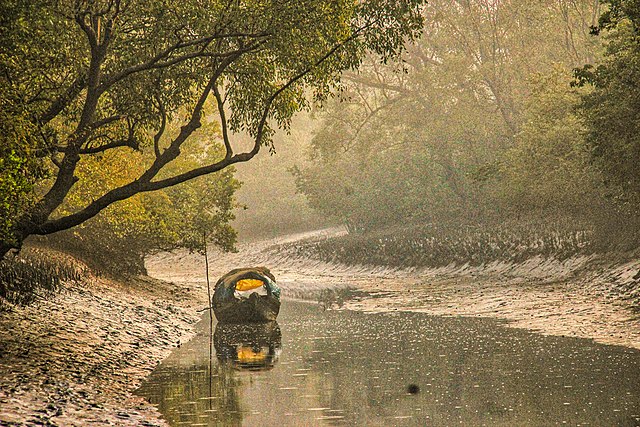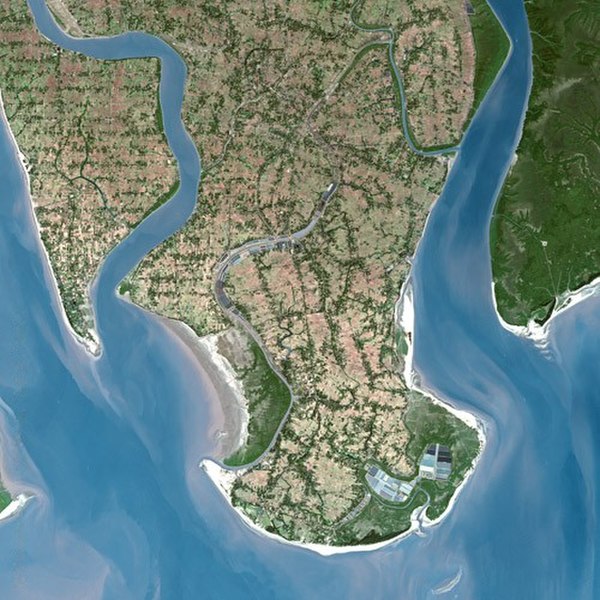Tiger attacks in the Sundarbans
Tiger attacks in the Sundarbans, in India and Bangladesh are estimated to kill from 0-50 people per year. The Sundarbans is home to over 100 Bengal tigers, one of the largest single populations of tigers in one area. Before modern times, Sundarbans tigers were said to "regularly kill fifty or sixty people a year".
A Bengal tiger in the Sundarbans
Sundarbans is a mangrove area in the delta formed by the confluence of the Ganges, Brahmaputra and Meghna Rivers in the Bay of Bengal. Spread across parts of India and Bangladesh, this forest is the largest mangrove forest in the world. It spans the area from the Baleswar River in Bangladesh's division of Khulna to the Hooghly River in India's state of West Bengal. It comprises closed and open mangrove forests, land used for agricultural purpose, mudflats and barren land, and is intersected by multiple tidal streams and channels. Sundarbans is home to the world's largest area of mangrove forests. Four protected areas in the Sundarbans are enlisted as UNESCO World Heritage Sites, viz. Sundarbans West (Bangladesh), Sundarbans South (Bangladesh), Sundarbans East (Bangladesh) and Sundarbans National Park (India).
Inside the sundarbans
Village in a clearing of the Sundarbans. Drawing by Frederic Peter Layard after an original sketch of 1839
Farm among paddy fields in the Sundarbans, 2010
SPOT satellite image of Sundarbans, released by CNES





